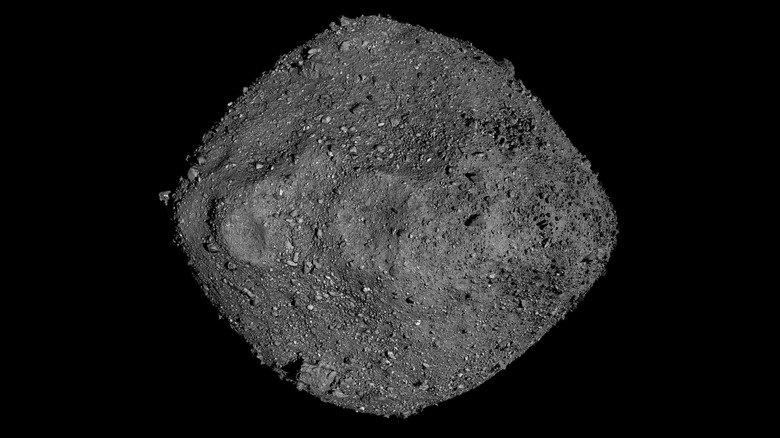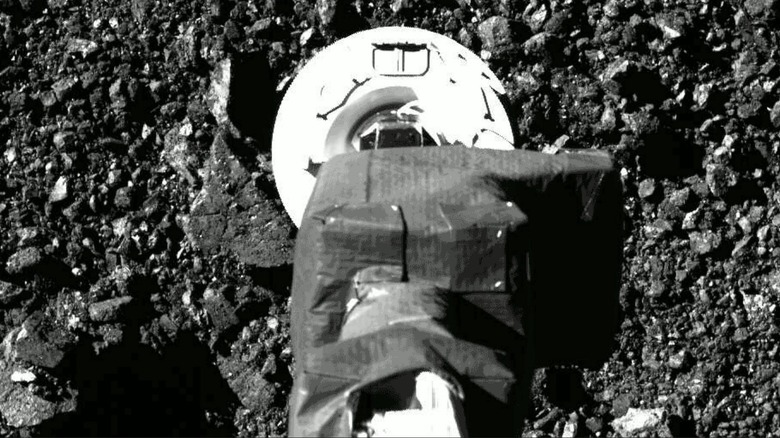How NASA's Audacious Mission To Sample An Asteroid Almost Ended In Bizarre Disaster
The OSIRIS-REx, the first U.S. spacecraft to collect asteroid samples, will return back with asteroid pebbles and soil specimens a little over a year from now. However, it had a close call, nearly drowning in the Bennu asteroid's surface. NASA has revealed that while collecting samples from the asteroid Bennu in October of 2020, the spacecraft's sampler arm sank over a foot in the loosely packed surface layer, as if there was no resistance. The spacecraft narrowly avoided being swallowed by firing up its thrusters and moving away from the surface.
University of Arizona Regents Professor of Planetary Sciences, Dante Lauretta, revealed that the "particles making up Bennu's exterior are so loosely packed and lightly bound to each other that they act more like a fluid than a solid." Experts behind the mission likened the experience to jumping into a pool of hollow plastic balls.
When OSIRIS-REx — short for Origins, Spectral Interpretation, Resource Identification, Security-Regolith Explorer, first arrived at its destination, the Bennu asteroid's surface looked more like rough terrain littered with boulders and pebbles of various sizes instead of a smooth, beach-like surface that was initially expected. The "rubble pile" asteroid's surface appears to be a bunch of rocky elements of varied sizes, barely held together by gravitational and electrostatic bonds. The peculiar surface nature also explains why the spacecraft was sinking into the asteroid's surface, even when the thrusters fired.
A close call with being swallowed
When quantifying the amount of resistance felt by the robotic arms while scraping samples from the asteroid's surface, scientists at the University of Arizona say it was akin to the pressure that a person would feel "while squeezing the plunger on a French press coffee carafe." While the close call of the OSIRIS-REx spacecraft put the team on the edge, it also provided some crucial lessons.
The most important among them is that scientists now have an idea of what to expect from future asteroid missions, and they can accordingly design the spacecraft and probe to avoid surface disasters. Another notable takeaway is that asteroids as loosely packed as Bennu present a different kind of threat to Earth as they would likely disintegrate more easily in the case of an impact event, compared to solid chunks of rock that can more easily be intercepted.
The latest findings from the OSIRIS-REx mission appear in two papers — "Spacecraft sample collection and subsurface excavation of asteroid (101955) Bennu" published in Science and "Near-zero cohesion and loose packing of Bennu's near-subsurface revealed by spacecraft contact" that appears in the July 2022 edition of Science Advances. Launched in September of 2016 aboard the Atlas V 411 from Cape Canaveral, the OSIRIS-REx spacecraft is destined to return with regolith samples on September 24 next year. It will be succeeded by another exploratory mission that will target the Apophis asteroid and is expected to take off in 2029.

